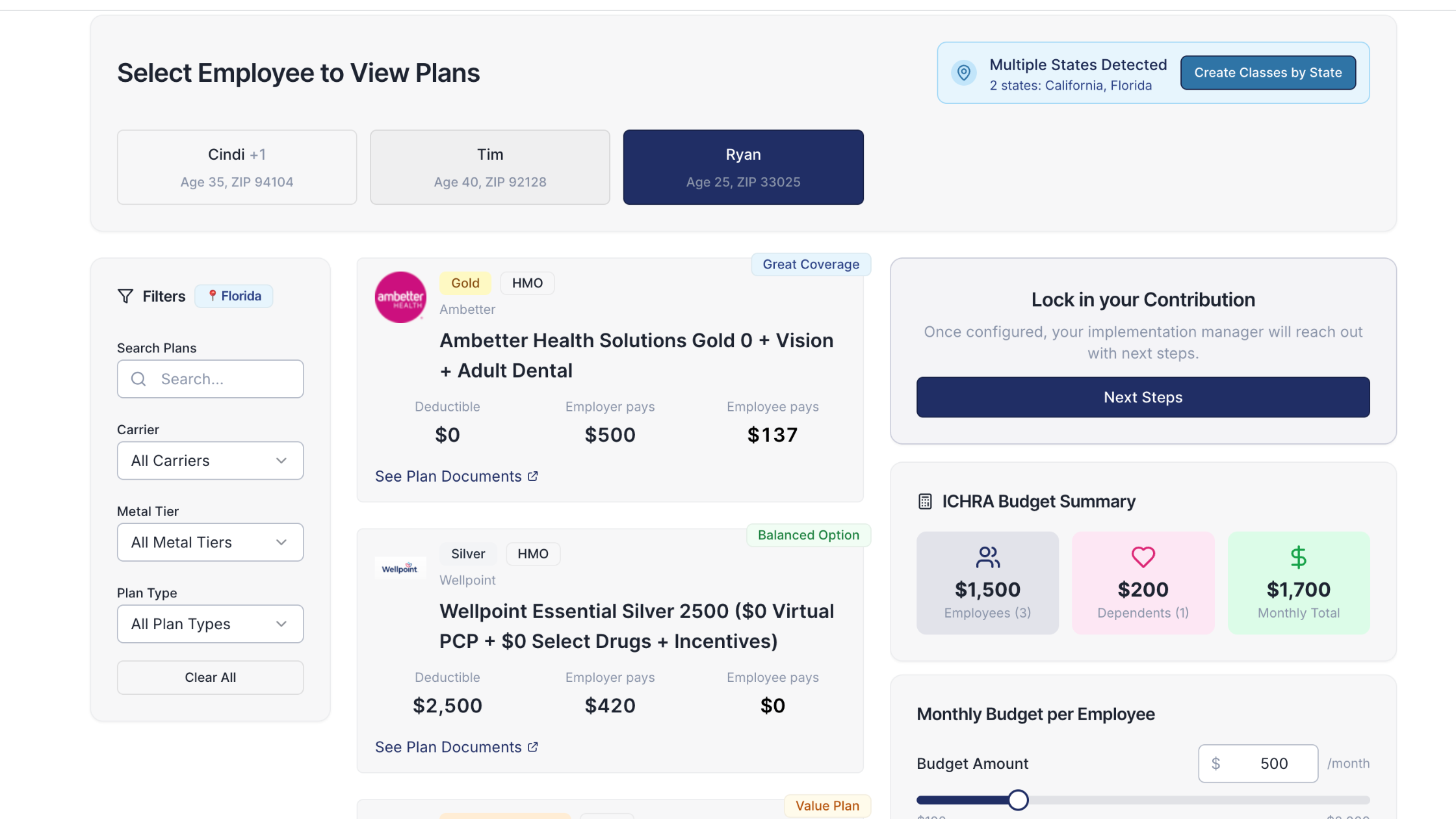Bronze and Catastrophic Plan are HSA-Eligible in 2026

A major update to the Affordable Care Act (ACA) Marketplace rules for 2026:
All Marketplace Bronze and Catastrophic plans are automatically eligible for HSAs as long as they are bought on-exchange (e.g., directly from Healthcare.gov or a State-Based Exchange). Previously, a plan was only HSA-eligible if it had “HDHP” or “HSA” in the plan title. It wasn’t enough for a plan to just have a high deductible.
What is a Bronze and Catastrophic Plan?
The metal tiers (Bronze, Silver, Gold, and Platinum) are based on “Actuarial Values,” which is the percentage of your covered health expenses the plan is expected to pay.
- Bronze covers 60%
- Silver covers 70%
- Gold covers 80%
- Platinum covers 90%
Catastrophic Plans are reserved for individuals under 30 or those with an economic hardship exemption. These plans have a high deductible, which is typically the same as the out-of-pocket maximum (around $9,000 to $10,000), meaning you'll cover most costs, and the plan is primarily there for extreme emergencies.
Naturally, Bronze and Catastrophic Plans have the lowest premium costs. These plans are best for:
- The Young and Healthy: Individuals who rarely visit the doctor and primarily need protection against catastrophic, unexpected illness or injury.
- Budget-Focused: Those who prioritize a low monthly premium and are financially secure enough to handle the higher costs (deductibles, copays) of routine care in cash.
What is a Health Savings Account?
A Health Savings Account (HSA) is a special bank account that functions as both a savings account and an investment account, but it's specifically designed for healthcare expenses. The goal is to help you save money for future medical costs while lowering your tax bill today.
Think of it as a personal, portable "health care emergency fund" that you own, even if you change jobs or insurance plans.
The Philosophy Behind the HSA
HSAs were created with a specific purpose: to promote consumer-driven healthcare. By pairing the account with a High-Deductible Health Plan (HDHP), the idea is that you have "skin in the game." Since you pay for more costs upfront, you are incentivized to:
- Shop Around: Ask providers for cash prices or negotiate costs before receiving services.
- Be Mindful: Use care only when truly necessary, thereby reducing overall healthcare spending.
There's a lot of debate about whether it actually met that mandate, but it still provides huge value to many consumers.
The "Triple-Tax Advantage"
HSAs are often described as "triple-tax-advantaged." This is what that means:
- Contributions are Tax-Free: Money you put into the HSA is deducted from your taxable income. This means your yearly adjusted gross income (AGI) is lowered, which can reduce your current tax bill.
- Growth is Tax-Free: If you invest your HSA money, the interest and earnings grow over time without being taxed.
- Withdrawals are Tax-Free: If you use the money for qualified medical expenses (like doctor visits, prescriptions, or eyeglasses), you don't pay any taxes on the withdrawal.
It's the only account that offers all three benefits. When used for long-term investing, it essentially acts as a powerful "second 401(k)."
How Much You Can Save (2026 Contribution Limits)
The IRS caps how much you can put into your HSA each year:
- Self-Only Coverage: $4,400
- Family Coverage: $8,750
- Catch-up (Age 55+): An additional $1,000
Who Benefits Most from an HSA?
The Long-Term Investor (The "Second 401(k)" Strategy)
Strategy: Max out your HSA contribution and pay medical costs out-of-pocket (using other savings) to let the HSA money stay invested and grow for decades.
Why it works: You get the immediate tax deduction, and the funds grow tax-free. After age 65, you can withdraw the money penalty-free for any reason (medical or not), making it a powerful retirement account, similar to a Traditional 401(k).
The Young & Healthy
Strategy: Pair a lower-premium plan (often called "Bronze" or "Catastrophic") with the HSA.
Why it works: You keep monthly costs low and let your HSA money grow for years, becoming a large investment fund for retirement health care.
High Earners & High Utilizers
Strategy: Max out your HSA contribution every year, especially if you expect to hit your deductible.
Why it works: You get the immediate tax deduction, and if you use the money for medical expenses, those dollars were never taxed at all.
Direct Primary Care Members
Strategy: You can pay your Direct Primary Care membership fees (a monthly fee for unlimited primary care) directly from your HSA, up to a legal cap (check current IRS limits).
Why it works: This makes an already cost-effective care model even more tax-efficient.
Who Should Think Twice about an HSA?
People Facing Tight Cash Flow
HDHPs shift the cost risk to you early in the year. If you can't afford to fund the HSA and cover the deductible, you could face large bills unexpectedly.
Instead, consider a lower-deductible plan (like a "Gold" or "Platinum" plan) for more immediate coverage.
People Eligible for Other Discounts
If your income qualifies you for Advanced Premium Tax Credits or Cost-Sharing Reductions (CSRs), those extra discounts often only attach to "Silver" tier plans.
Giving up the Silver plan's richer benefits to qualify for an HSA may not save you money overall. Don't sacrifice the discounts lightly!
People Who Delay Care
If a high deductible causes you to skip routine or necessary preventative care (like doctor visits or screening labs), this can lead to more serious, expensive problems later.
An HSA only works if you use it to stay healthy!
Broadening the Benefits of the Health Savings Account
The biggest complaint about HSAs and High Deductible Health Plans (HDHPs) was: You'd pay a low monthly bill, but then face a huge deductible—thousands of dollars—making you skip or delay necessary care like doctor visits or screenings because you couldn't afford the up-front cost.
The Fix:
The new rules for ACA Marketplace Bronze and Catastrophic plans directly fix this problem. Now, these low-premium plans are required to offer pre-deductible copays (like a flat $50) for services such as office visits. Some even have a $0 deductible.
This means you can receive essential care without having to pay your entire deductible upfront, which helps overcome the cost barrier that delays care for many people. Plus, these plans are now automatically eligible for an HSA, allowing you to save money tax-free to cover any other costs, making the HDHP model much more practical and patient-friendly.
The HSA-Compatible ICHRA + Health Wallet Strategy
This strategy allows you to offer defined, tax-advantaged health funds while preserving your employees' ability to use a Health Savings Account (HSA). You control your cost with a fixed monthly contribution, and your employees get real, flexible dollars for their health and wellness choices.
For the Employer: The Core Rules
Your goal is to stack three powerful benefits without breaking the strict HSA rules regarding first-dollar coverage for general medical expenses.
1. Fund the ICHRA to reimburse only the employee's individual health insurance premium (a Premium-Only ICHRA). This lets the employee buy a Bronze or Catastrophic HSA-eligible plan on the exchange, satisfying the ACA mandate without covering pre-deductible medical costs.
2. Offer a "Post Deductible" Health Wallet: It maintains HSA eligibility because it only begins to pay after the employee has met at least the IRS-mandated minimum HDHP deductible. This allows the employee to access both the Health Wallet Funds and the HSA.
What to Do Next?
The recent policy changes that automatically qualify all Marketplace Bronze and Catastrophic plans for an HSA are a huge win for consumers, simplifying a previously complex process and finally pairing low-premium plans with maximum tax savings.
If you are currently enrolled in or considering a Bronze or Catastrophic plan for 2026, take these two steps:
- Review Your Enrollment: Confirm your plan choice on the ACA Marketplace (Healthcare.gov or a State-Based Exchange) and verify it is a Bronze or Catastrophic plan for the 2026 plan year.
- Open an HSA: Partner with a bank, credit union, or investment firm that offers Health Savings Accounts. By opening and contributing to an HSA, you can immediately begin utilizing the triple-tax advantage to save for future medical costs.
Don't let this massive financial opportunity pass you by. The 2026 open enrollment period is your chance to use the most powerful savings vehicle in American healthcare.
You got questions, we got answers!
We're here to help you make informed decisions on health insurance for you and your family. Check out our FAQs or contact us if you have any additional questions.
Explore more related content
What is Venteur
Explore the best human-first Health Insurance platform
Simple, personalized health benefits
Sign up in minutes, define your contribution, and let your employees choose the health plan that works right for them
Integrations to make everything run smoothly
We'll connect with your payroll and finance systems to make deductions and premium payments seamless
Easy onboarding and off-boarding
In just a few clicks, add your roster and make updates on the fly. We'll handle it from there.
Venteur Certified Brokers to help your employees pick the right plan
Our trusted brokers ensure the best outcomes for employees and employers by unlocking health savings and providing unrivaled plan options.
AI-powered plan recommendations to give you confidence while you shop
Backed by 30 years of healthcare data, Venteur’s AI helps employees compare and choose the best plan for their unique situation.
Compliance and reporting because no-duh!
Venteur manages plan administration, reporting, and compliance so you can focus on growing your business.


